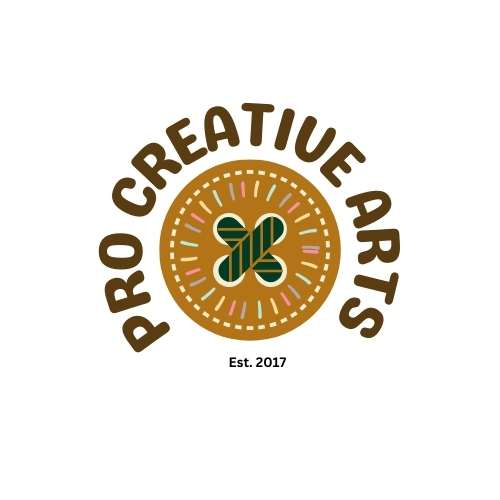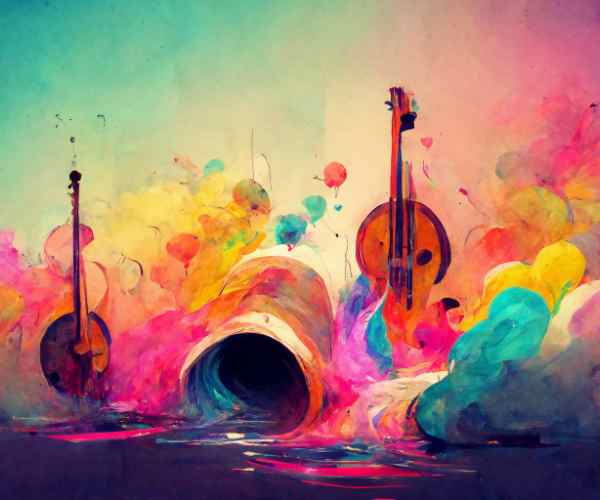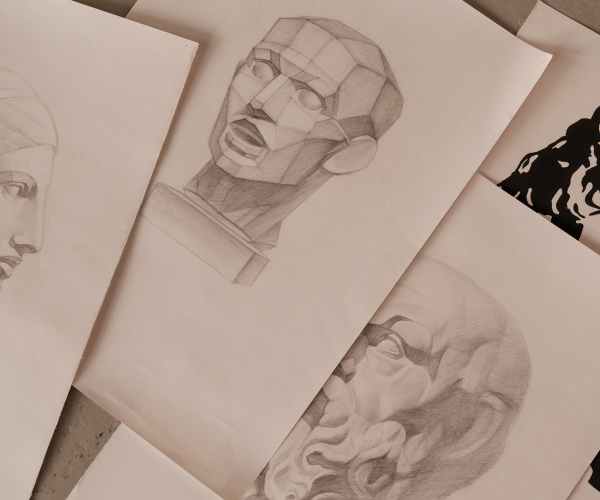Working with creativity and imagination is by far one of the most astonishing approaches that a good number of people in the creative sphere utilize for their practice today.
I clearly recall the first instance when I entirely recognized the importance of being mindful. I was seated in a crowded place, a café to be specific, with a pen and some paper and as I tried to brainstorm for a project, the cacophony around me completely distracted me. I was managing to think clearly so my concentration was elsewhere. Then, this buddy of mine insisted that I should give mindfulness a shot. I was not completely convinced at first, however, I decided to give it a try.
In some ways, mindfulness is about being completely in the present, in the now and here. For example a place in time where thoughts and feelings can be seen and not judged. It can be a rethinking real as in a break: a break away from the noise and disturbances of regular life. And meditation goes further by giving individuals the tools they require to achieve a more calm and concentrated state.
In my experience, it’s the synergy of mindfulness and meditation that is fascinating. You find a way where there is none, or where the way is blurred; instead of being bombarded with zillion of ideas, you simply begin to experience them, creating the right kind of thinking for new ideas to start emerging. This might sound quite odd, but it works and this is what creativity is about – trying new things!

The Science Behind Mindfulness and Meditation
Let us look at understand a little further of the idea of “mindfulness” and it’s importance.
Mindfulness is the practice of concentrating on the current time and not losing focus on what is going to happen in the future. Mindfulness is more focused on your day to day life: the breathing, memories, aspects of space and feelings.
There are several principles that define mindfulness. First, it’s about awareness—acknowledging your thoughts and feelings as they arise. Second, it involves acceptance—recognizing those thoughts without judgment. This acceptance can be liberating. For instance, instead of thinking, “I shouldn’t feel anxious about this project,” mindfulness teaches you to acknowledge that anxiety and allow it to be part of your experience.
What is most astounding about mindfulness is the impact it has on our brain. Studies indicate that even when someone is trying to be mindful, neural circuitry may be enhanced alongside potential new neurons developing. Neuroplasticity permits the brain to restructure, and that ability is in some fashion promising for cognitive rigidity. And what does that mean for creativity? In simple terms, a brain that is more malleable in perspective is more effective in idea generation and problem solving.
The Role of Meditation
At this moment let us discuss the core topic which is meditation, and what role does it play one might ask.
You can practice meditation in various forms and each form helps in a different manner. In order to remain calm, mindfulness meditation which deals with focusing on the breathing as well as the thoughts one has is very useful. There is also loving-kindness which is more about developing love for compassion towards yourself and others that helps increase one’s emotional intelligence and opens up ways for creativity.
Studies show that with regular meditation practice, one is able to notice a change in activity in the part of the brain that is responsible for creativity. With reference to an article by the journal Psychological Science, it was reported that the participants in the study who meditated could more ably do divergent thinking which is used in venturing into new areas of creative solutions.
When the brain is quite calm and clear, outside of its normal chaotic activity, it should be easier to be innovative and creative. I have discovered that through proper meditation I can view seeming challenges in a broader spectrum because my mind is clear.
Be it composing a piece of art, a novel, or thinking outside the box to finish chores mindfulness as well as meditation aid in plenty, It provides a healthy ground for one’s creativity.
The Effects of Mindfulness and Meditation On the Creative Thought Process
Enhancing Awareness
To enhance awareness is perhaps the most beautiful quality of mindfulness that is th.
A friend of mine was talking about a graphic designer by the name Sam and how they need to meet with him. His colleague was describing him as someone who is an expert in his field but was getting overwhelmed by his ongoing projects. He was specifically given a task to come up with some new designs but every idea in his head felt like it was already done. Out of frustration, he attempted practicing mindfulness but to no avail.
Sam saw no other option but to allocate few quiet minutes of his day to contemplate what he needed to do for the new projects and then, he would slowly devote a few minutes to transcending every unneeded thought that would recoil in his head with the sole aim to concentrate on Sam and would need to observe his actions as well. Although everything seemed dull, this practice did spark something deep within him. It is understandable that he was frustrated as usual but at least there was a glimmer of hope, which is how I describe and type inspiration.
For example, there is a solid chance he encourages himself through walks to work while needing to pay close attention to where he is walking. He also ended up noticing the yellow of the building’s outer layer and the blue surrounding the sky which kickstarted his mind into a flurry of ideas. These all of a sudden became crucial components for his latest project. He was able to stop everything for once and begin looking and understanding for problems with ideas that had existed for some time now. If this does not highlight why mindfulness is so important, then I do not know what does as it shows that people can start thinking differently.
Subliminal meditation
In aiding with some strong thoughts, meditation proved its significance once again in the worsening tank of the mind.
It had been a particularly harrowing week, with multiple creative assignments yet to be completed. Ideas started merging, the mind went blank, and inspiration was nowhere to be found, it’s as if a tornado swept through my brain. As a last resort, I decided to meditate for a few minutes instead. I turned off the lights in one corner of my house and began focusing on my breathing instead.
Initially though, things were a bit messy in my brain. I was fidgeting around and seemed to be permanently distracted by something. But after a while, the deep breathing sessions started, the nervousness began to fade away as an overwhelming feeling of peace settled over me. After I was finished with the meditation, I began to slowly open my eyes, it was during that process that I completely realized an unbelievable thought. I cannot repeat it, but it was the feeling as tho rising from a fog where completely a new approach to a work-in-progress model was revealed. The synchronization of clashed ideas into a defined concept was surreal. From that, I have learned that piecing together thoughts in order to alleviate tension is the key to inspiration.
Another approach to enhance/ing problem-solving skills.
Creativity is triggered but sensitivity towards mindfulness bursts a problem-solving technique and comes into play.
Say we have a technology firm who instilled the concept of mindfulness within its staff members. The firm was going through a lot, as there was a product launch that was scheduled in a few weeks and the staff was not able to pull everything together. People were extremely frustrated, and communication was getting worse.
So to alleviate the situation, management rolled out a mindfulness program which included workshops and guided meditation. But as the team started doing this, amazing things happened. They began to approach situations differently. Rather than feeling stressed out about the deadline, they became more open and cooperative with one another.
The outcome was extraordinary. The team was able to deliver on time and even came up with constructive ideas that would allow the product to stand out in the market. This real-world example explains the impact of mindfulness on teams and their ability to approach problems in a friendly manner.
FAQs
What is the best time to perform mindfulness exercises if one seeks creativity?
Timing plays a significant role in mindfulness in terms of its effectiveness.
The morning hours are now a special time for my mindfulness practice. There is something about those hours – the world is still asleep, and no one is rushing. I believe that taking a few minutes in any day to practice mindfulness at the start helps in maintaining a calm tone for the events to follow.
A lot of people feel that performing mindfulness practice at the start of the day, especially in the morning, tends to help in decluttering the mind and in creating new ideas throughout the day. But this doesn’t imply that the morning period is the only time one can make use of!
Other people, including myself, take an afternoon mindfulness practice because I tend to feel drowsy after lunch. Having an afternoon session helps relieve some pressure off my mind when I need the boost. Evening also suits many as it allows thinking after a long and tiring day.
At the end of the day, pick the time that feels best for you, that’s all that matters. Looking into different parts of the day will aid in figuring out the time of the day that relates best to the mindfulness practice and stimulate out your creative side to shine.
Is meditation for creativity suitable for the average person?
Not at all!
There’s this misconception that meditation is only for the super zen people or the spiritually inclined individuals, which isn’t the case. Everyone is capable of meditating and reaping the benefits from it regardless of who they are or what their experience level is.
When I first took up this practice, I was quite doubtful. I had thought, “I cannot sit still for that long.” But the harsh truth I realized is that meditating is more than perfect work and is about showing up for your own self. It does not matter whether you are a painter, a poet, a business professional, or even anyone who just wishes to explore their artistic side.
Meditation has the potential of being one size fits all. If you favour guided meditation sessions, or wish, for silent contemplation, or even doing breathing exercises, there’s always a class for everyone. Thus, if you want to know how the practice of meditation can aid your creativity, you should not be so cautious in trying it out! You might just find it extremely helpful and gain the confidence needed to sculpt your own thoughts.
Is there a generic time period where someone can expect to see results?
Wait a second, that sounds far too familiar!
Well, I hope you aren’t disappointed with this answer because yes, the timing of when to consider the expecting results from creativity improvement through mindfulness and meditation is very individual-based.
During the first few weeks of my contemplation, I could feel my inner self untangling. I began to get a sense of balance, which aided me in thinking straight during some of my creative endeavours. That said, my flash moment wasn’t instant.
According to several studies, transformation of this kind isn’t instantaneous and may even take longer than expected. It is suggestive that while certain visually evident benefits show up instantly, changes at the deeper level, especially in terms of creativity, tend to lag. A lot of people report significant boosts after weeks(s) or even months(s) of doing the said activity consistently.
While this entire concept sounds easy, it’s extremely important to be fully present, and believe in the practice. With every time and effort you put towards the goal, however minute it may seem, you are one step closer in realising your creative intention. The process is as important as the end result, so appreciate even the most basic of triumphs!
Conclusion
To sum it up, exploring mindfulness and meditation as an aid for fostering creativity is a journey worth pursuing.
These sorts of activities assist individuals in enhancing their awareness levels, decluttering their minds and thinking outside the box. While most of this has been gone over, sencing the environment goes hand in hand with inspiration and meditation acts as a filter for one’s thoughts.
Consider adopting these habits into your daily routine. You can put some time aside to practice these in the morning, spend some time being mindful in your lunch break, or try out different forms of mediation – all of this will improve your creative self in one way or the other.
Please let me know about your various experiences regarding meditation and mindfulness. Which techniques have you practiced? How do you think they’ve affected your creativity? Don’t hesitate to say about your experiences, give tips and share your thoughts in the comments! We can help each other find the beauty in the creativity.




